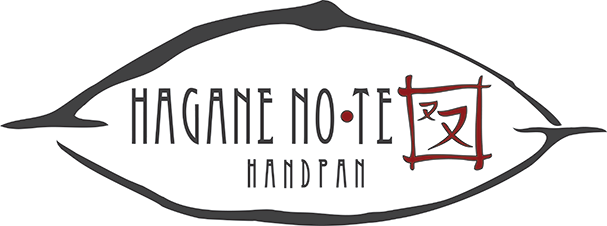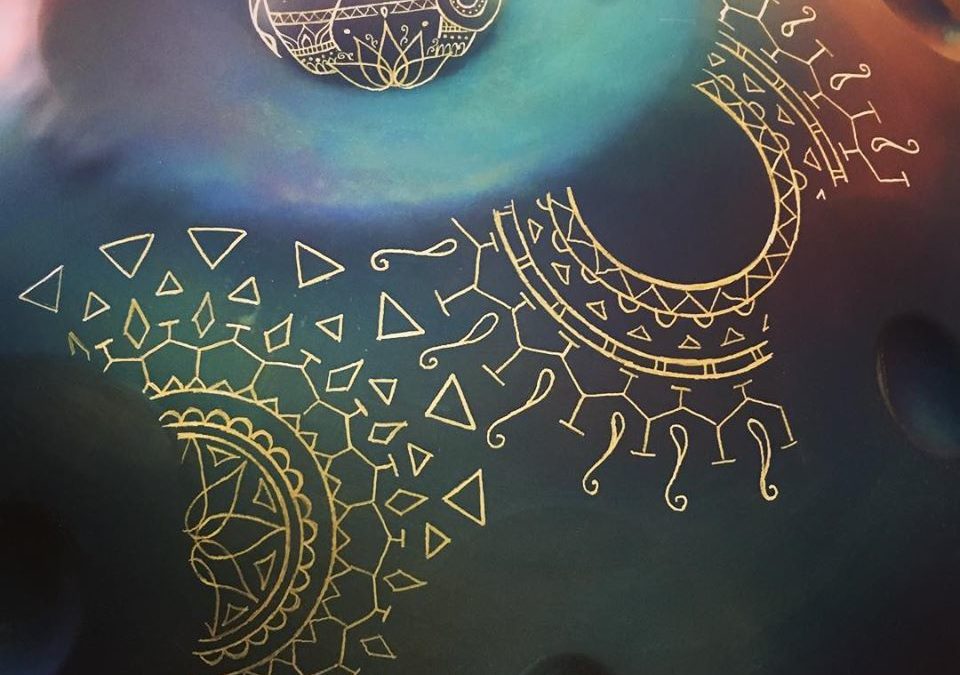The eternal dilemma about how to choose an handpan scale is quite something, especially as buying such instruments is an economic effort and an investment on playing commitment. There are several ideas and theories about choosing the right scale and version, but more than often is a matter of personal taste, music considerations and a hint of luck.
This being said, our customers usually ask us for advice when they are new to handpans, and we are fully committed towards helping them finding the right scale. For this reason, we have analyzed all the scales of our store to give you the basic information you need to know about the handpan scales in our list.
7 tips about handpan scales
There are some easy steps one can make when deciding:
1. Watch YouTube videos and feel the vibes of different scales: the usual difference is between major and minor scales, happier the former and darker the latter. We have also built our Handpan Virtual Instrument (click here to visit the page) to play with the scales available in our store, and a Handpan Scale Comparison Page to allow you to listen to all the scale audio samples and filter them.
2. Know the difference between pentatonic, hexatonic, diatonic or chromatic scales:
– Pentatonic scales are brighter, they sound marvelous as the harmonics are repeated more than once – usually each note is repeated in two stacked octaves:
- Akebono (Japanese scale miyako-bushi)
- Low Pygmy (minor)
- Magic Voyage (minor)
- Oxalis (major)
- Paradise (major)
- Pentatonic (major)
- Pygmy (dorian)
– Hexatonic (6-note) scales usually avoid the one note that would take you out of context. This note is usually the fourth degree of the scale. These are among the most common six-tone handpan scales:
- Amara/Celtic Minor (dorian)
- Blues (blues scale)
- Equinox (minor)
- Minor (minor)
- La Sirena (dorian)
- Mixolydian (mixolydian)
- Mystic (minor)
- YshaSavita (major)
– Diatonic, 7-note scales are the choice if you are serious with harmonic and melodic studying: they have all the intervals of any given scale, major or minor, and will make you study and exploit the possibilities of your instrument:
- Aeolian (minor)
- Annaziska/Kurd (minor)
- Hijaz (phrygian dominant)
- Jibuk (mixolydian)
- Romanian Hijaz (dorian #4)
- Sabye (lydian)
– Chromatic handpans, usually mutants as they are called, are for players who need more notes to dive into different scales or modes. These handpans are very useful if you plan to play with professional musicians or to use your instrument in complex projects, where more notes are needed. Chromatic handpans are usually tailor-made, so they do not appear in our list.
4. Feel the material: handpans made in nitrided dc04 steel have a fuller sound, with clear overtones and good sustain. Stainless steel handpans are brighter, tending to lose some low frequencies as the overtones sound a lot brighter, and have a very long sustain. While the former are better for percussionists, the latter are for more delicate and slow players, who prefer filling the air with sound and less percussive rhythms.
5. Try a few: every player has their own feeling with the instrument. As for any instrument, everyone has their preferences and connects with one handpan rather than with another.
6. Ask fellow musicians for advice: spend time with the musicians you know to understand which are the possibilities of the scale or the music genre you are interested in.
7. Ask us: we will be happy to give you advice based on our experience as makers and musicians.
Do you have any question? Ask us in the comments section!


Hi, my boyfriend bought me what I believe to be is a hand pan but it only has 5 dimples/tones. I’m trying to find good learning information, but it seems that everything I’m finding has more than 5. Any suggestions? What would I call this 5 note or 6 note?
Hi! Thank you for your comment. Send us more details and pictures at info@haganenote.com so we can help you find more information about your instrument!
Hello,
I am very curious about a Romanian E Hijaz extended (Mutant?), and I am in talks with the maker to have one made for me.
A few of my handpan playing friends have advised against mutants, since the sound quality is compromised due to having a lot of additional notes (the handpan I want to get will have a total of 14 notes plus ding), or that the the additional higher end notes will not have a good sound due to placement, size of tone field etc.
Can you share some advice from your experience, how good mutant handpans actually are, and if it is worth investing in one, or rather try to get used to playing on 2 different pans that compliment each other?
Thanks!
Hi Ara,
thank you for your comment. In our opinion, mutant or extended handpans are very good instruments, especially if you wish more notes to play over different scales. As you know, the handpan comes from the steelpan, where chromatic notes are tuned on the same shell.
The main issue of a mutant handpan is the possible cross-talking between notes, but this is a side effect of tuning errors made by the maker. If the notes are tuned properly, the cross-talking will enhance good resonances, making the mutant a wonderful sounding music instrument.
As for the higher notes, since they have to be very small, the tendency is some degree of stiffness, but this is quite normal, both in “traditional” handpans and in mutants, and a bit depends on the position and on the type of material used. Stainless steel handpans partially solve this issue thanks to their long sustain and brilliant sound timbre.
As you are thinking about an extended Romanian E Hijaz, you have two possible choices: repeating the notes of the scale on stacked octaves, amplifying the resonance and avoiding bad cross-talking; adding chromatic notes to be able to play over different scales and modes, reducing the resonance of some repeated harmonics and risking a bit of bad cross-talking if the notes are not tuned perfectly.
Both solutions are viable, it depends on your music needs. Playing with two or more handpans answers to the need of playing on different scales, the same as having a chromatic mutant. The choice is a matter of comfort, carrying around one handpan is better than carrying more handpans, and a matter of trusting the maker you choose.
Having a diatonic Romanian mutant would boost the sound of the Romanian mode, being able to play the same scale over different octaves and harnessing the opportunities given by the huge resonance effects, and in this case you would need more handpans to play over different scales.
We hope to have been of help, and please write or comment again if you wish more advice!
Thank you!
Hello.
I’m a vocalist and Yogi And percussionist. I’m very excited to be getting a Handpan soon. I have a friend who i am going to buy one from. He has a new SewHandpan with kurd scale I think in the key of E. I am prob going to be purchasing it with a hard case for about $1500. I’m wondering if this is sensical.
I also wonder if this is the right scale for me. I’m going for a scale that is mainly bright and uplifting but has some flexibility and can also be played to sound mysterious. I’m hoping the scale will be able to play with some common notes like D and C. What would you say is best for someone of my style where I am a good musical person with a keen ear for sounds and rhythm.
Cheers and thanks for your information.
Hi Patrick,
thank you for your questions. If the Kurd scale you friend is selling is the one with the C# on the ding, then it is one of the best scales around, and Sew makes very good instruments. The C# Kurd has several advantages, as it is a diatonic scale with the root note on the ding, and the note layout very versatile.
This being said, the Kurd scale is a natural minor scale. It can be used over different major and minor scales, but its nature is that of a minor. On the other hand, major scales tend to be very, very uplifting when played on a handpan, we find them a good buy if you have other handpans, or if you have specific purposes like music therapy and similar.
As for the common notes you are mentioning, if the handpan is a C# Kurd you won’t have C or D, but if it is an E Kurd (a G major scale), then you’ll have them. Our piece of advice is going for a D Kurd if you like the scale and wish to have such notes.
Moreover, if you wish for a major/minor sound, you could opt for a Celtic Minor handpan, as it is a Dorian mode, which tends to have a mixed sound between uplifting and mysterious, or try the Equinox scale.
Please try our virtual player if you wish to play the different scales:
https://www.haganenote.com/vst/handpan-virtual-instrument.html
If you wish more information or advice, please write us, we’ll be happy to help.
Thank you!
I was wondering, E major is the same scale as E asha?
Hi, yes, the E Asha is a version of an E major scale. Looking at the note layout, the E Asha we would be better interpreted as an A Lydian scale, which is the modal scale built over the 4th degree of a major scale. The E on the ding can be interpreted as the 5th degree of the A Lydian scale, a note that naturally resolves on the root of the scale, the A.